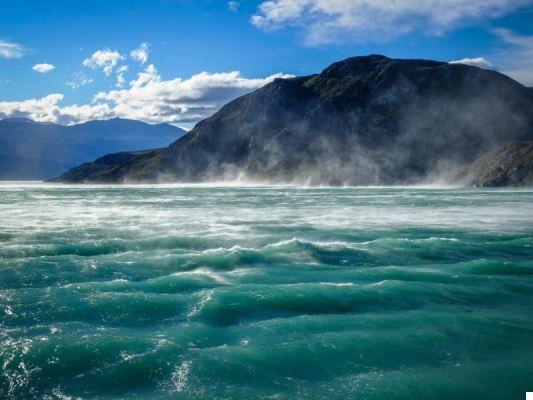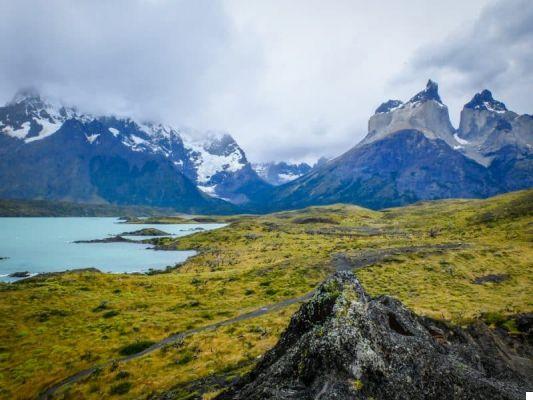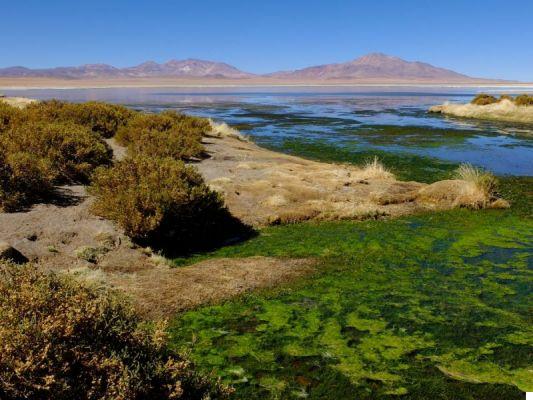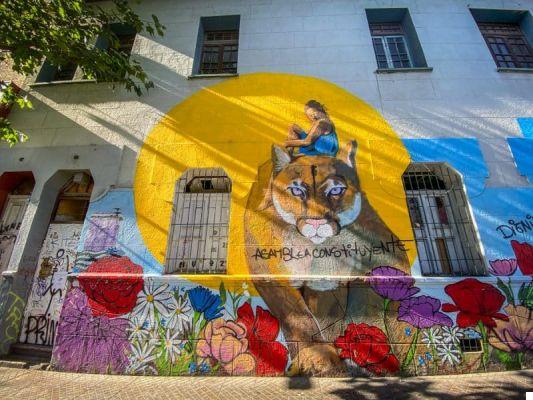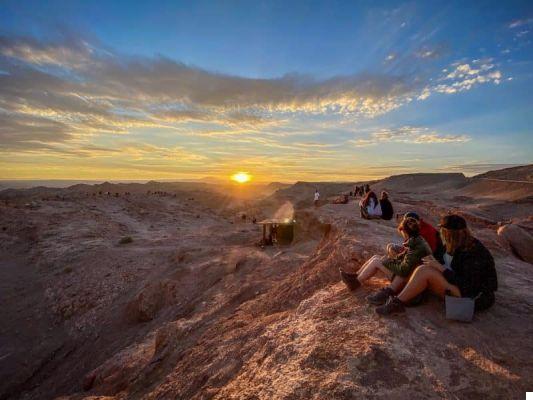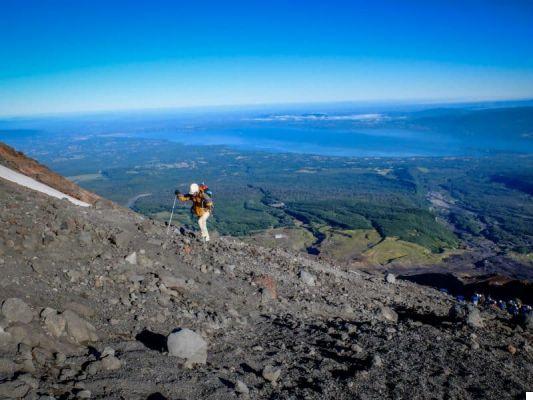
Chilean Patagonia and southern Chile: the climate
All of Chile is located in the southern hemisphere and the seasons are reversed compared to ours. Speaking in particular of the Chilean Patagonia and the Southern Chile the best time to go is winter (which coincides with the austral summer), between November and March, unless you want to dedicate yourself to skiing and other winter sports. There Lakes Region andChiloé island they are particularly rainy all year round, and the driest month is January (I was there in the second half of January and I didn't see a drop of water). There Chilean Patagonia it can be visited more or less all year round, but between November and March the temperatures are higher, the days are long and the connections between the different locations are much more frequent (but the prices are obviously higher). Between November and February the days are very long, it is the austral summer and the sun sets very late, a marvel!
Security: Is Chile Dangerous?
(updated October 2021)
I decided to add this paragraph after my second trip to northern Chile (November 2019) because since 18 October 2019 the whole country has been involved in protests almost everywhere but, at the moment (October 2021) the protests have stopped. The straw that broke the camel's back was the increase in the price of means of transport, but it was obviously only a pretext to start the revolt concerning, instead, the profound inequalities that have always existed in the country. After the first 2 weeks of demonstrations and protests (complete with a military curfew, dead and wounded) that completely blocked the country, the situation has changed a bit. In November 2019, the protests were daily only in Santiago and Valparaiso (seat of Parliament), but to a lesser extent and only in the evening, and could already be safely avoided. In Santiago they usually took place in the center, near the University and Piazza Italia, and in Valparaiso in front of the Parliament. I slept in Bellavista (therefore 2 steps from Piazza Italia) and the events did not create too much discomfort for me. Obviously there was a bit of discomfort because the traffic was blocked, but nothing dramatic. Another thing are the general strikes, which were often and willingly called and could compromise transport and tours (even in San Pedro di Atacama for example): try to get information from the locals to find out when and if they were called. At the moment, however, the situation in Chile has returned to total normalcy.
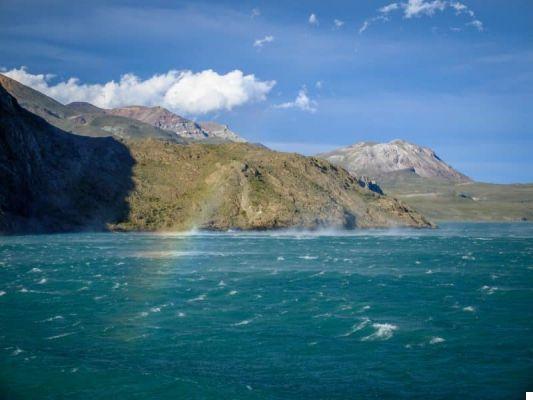
How to get around in Chilean Patagonia and Southern Chile
All of South America has a really well developed bus network and, in my opinion, the bus remains the best way to get around and to visit like-a-local countries. There are buses of all classes, from basic, super cheap, to VIP. I tend to always use the medium-high range tourist buses, and I book i "semi-room" seats (with 45 ° reclining seat) oi "bed" (with 90 ° reclining seat, perfect for night journeys). In all tourist buses there is always a bathroom (even the bus makes several stops for the bathroom) and they always provide a snack and a drink; in “cama” trips a hot meal and various snacks + drinks are often included. Tickets can be purchased at bus stations; Unfortunately you can't buy them online because the sites require a document from Chile, Argentina, etc. depending on the company. There are many bus companies, but just enter the route you are interested in on Google and you will easily find the website of the company you are interested in with all the timetables. Another site that I find very useful, especially in the planning phase, is the site of Rome2Rio, where there are all the options to get to a certain place.
In Chile there are also low-cost airlines (Sky, Jet Smart for example) covering the whole country. If you have little time available, consider taking some flights by plane.
Health insurance is required
In Chile our health coverage is not valid. My advice is to always take a classic medical-luggage insurance that can cover you during the trip. I am very happy with many insurance companies, a site that compares the policies of different companies and proposes the most convenient policy for that particular trip. To do this you will have to enter the data relating to your trip (country, duration, etc.) and they will send you an email with the best proposal that you can then buy directly online.
Where to sleep in Chilean Patagonia and southern Chile
- Caracautin Hostal Tu Huella
- pucon Hostal Chili Kiwi
- Puerto Varas Margouya Hostel
- Ancud Hostal 13 Lunas
- Castro Palafito Hostel
- Puerto Natales The singing lamb
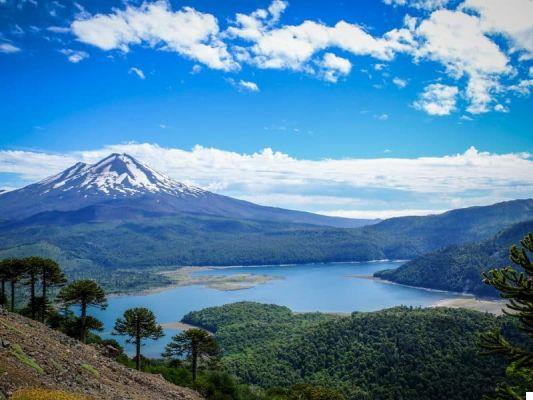
What to see in Southern Chile: all the places and activities not to be missed
The National Parks of Araucania
Getting off by bus from Santiago de Chile, after about 8 hours you will arrive at Temuco, the main city of Araucania region. From here you must necessarily rent a car to visit the Malalcahuello and Conguillo parks; by bus you can get to the town of Caracutìn but from then on the roads are unpaved and there are no more means of public transport. This was the only stage of the trip where I rented a car (it is not necessary to rent a 4 × 4, a normal car is enough, although in some places you have to be really careful). The whole region is littered with snow-capped volcanoes, glacial lakes and rushing rivers and is one of the areas with the highest concentration of active volcanoes on the planet!
Trekking in the Parque National Conguillo
Il Conguillo National Park (admission 6000 pesos) is located 25 km south of Caracautin, and was included in 2008 between UNESCO Biosphere Reserves. The centerpiece of the park is the beautiful Llaima volcano (3125 mt), one of the busiest in Chile, and the famous araucaria trees (the park was established mainly for their protection). Despite the high risk of eruptions, the park is open to the public and there are many well-marked trails that allow you to explore mountain lakes, deep canyons and native forests. I explored it for 2 days and I recommend: 1) the pathway Sierra Nevada (5h and a half round trip), a very beautiful and panoramic trek where you pass in the middle of the araucarias and there are several view points overlooking the lake and the sierra (you can also see the Villarica volcano in the distance); 2) the sentiero Los Carpinteros (2h round trip) which arrives at the Captren Lagoon; 3) the La Ensenada trail (45 ') which reaches the marvelous Arcoiris and Verde Lagoons whose water color is something unreal. Continuing beyond the latter towards the south exit of the park there is then a circular path that leads to the Truful Truful waterfalls but they are nothing special in my opinion.
The Martian landscapes of the Reserva Malalcahuello-Nalcas
This reserve with free admission is located 65 km north-east of Caracautin and is one of the most suggestive parks in the whole region. The landscape here is completely different from the Conguillo, rather it seems to be on Mars. The environment is surreal, expanses of ash and sand among which the profiles of the gods stand out volcanoes Lonquimay, Tolhuaca and Callaqui. The path that reaches the navidad crater on the Lonquimay volcano is wonderful (2h and 15 'between going up and down); it is a bit tiring because it sinks into the sandy / lava soil but the view of the mouth of the volcano is impressive, as is the 360 ° panorama.
Along the road from Caracautin to the Reserve there are several waterfalls hidden by the vegetation that can be reached with small treks; stop at Salto del Indio and Salto de la Princesa.
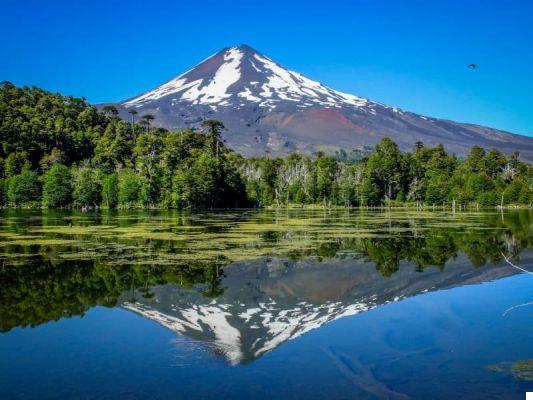
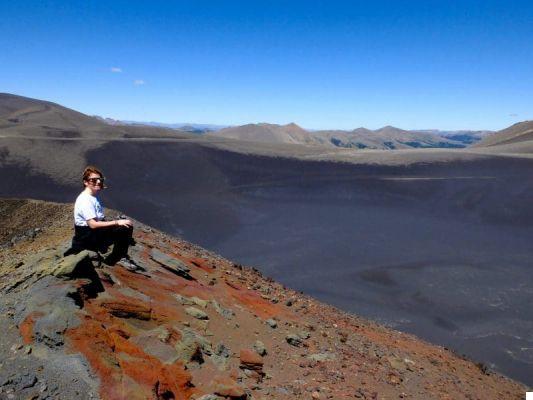
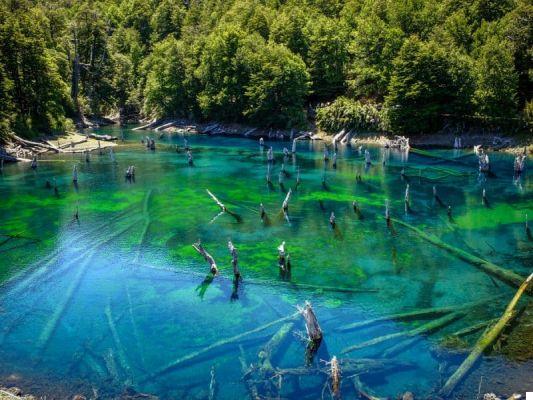
Pucon: rafting, trekking e relax
pucon is a small town on the shores of the lake of the same name and has become very touristy and popular for adventure sports. In the surrounding area there are several Natural Parks and it represents the perfect base for many outdoor sports activities: trekking, mountain biking, horseback riding, rafting, kayaking and so on and so forth.
Trekking in the Parque Huerqueque
If you are short on time the Huerqueque Park (admission 5000 pesos) can be visited with a day trip starting from Pucon; there are JAC buses that leave in the morning and leave in the late afternoon but it is always advisable to arrive at least 20-30 'in advance (unfortunately it is not possible to buy tickets the day before). This park is full of rivers, waterfalls, alpine lakes and araucaria forests; the paths are well marked and are suitable for excursions of a few hours or several days. Going in a day the most beautiful path to do is the Los Lagos Trail (3h30 'one way), the climb is long and quite tiring but when you get to the lakes you immediately forget the effort to get there.
The ascent to the crater of the Villarica volcano
The ascent to the smoking crater of Villarica volcano (2847 m) it is the most popular excursion in the area, but it is not always possible to do it. Villarica is the most active volcano in Chile (the last eruption took place in 2015) and it is the government body that monitors the volcano's activity that decides whether or not to give the green light. Climbing the volcano is also weather-dependent and is only allowed in clear skies and little wind. If these conditions occur, you can plan the climb with a local agency (you will find many!). I paid 75000 pesos, to which 10000 pesos must be added if you take the chairlift that allows you to jump the first 500 meters of the climb (and I recommend it if you are not super trained). We leave in the morning at 6 from the hostel and the agency provides all the equipment: jacket, pants, ice ax, crampons, helmet, gas mask and backpack. From the arrival of the chairlift you start to go up with the guide and it takes about 3h to get to the crater; just before reaching the top it is mandatory to wear a mask (a lot of gas comes out of the mouth of the volcano as well as the lava) and you can stay close to the crater for a maximum of 5 '. I must admit that the mouth of the volcano is quite impressive, you can feel that you are walking on something alive, active, the lava is fiery red, bubbling, and a few meters further on there is snow, a quite surreal situation. . Not to mention the view, from there at the top the eye sweeps 360 degrees, you can see the lakes and the peaks of several other volcanoes: really exciting. But the funniest part is definitely the descent! From a certain point on, you start sliding on the snow with the help of a plastic support and it's great fun! The descent takes about 1 hour and a half and at 16 pm we return to the hostel.
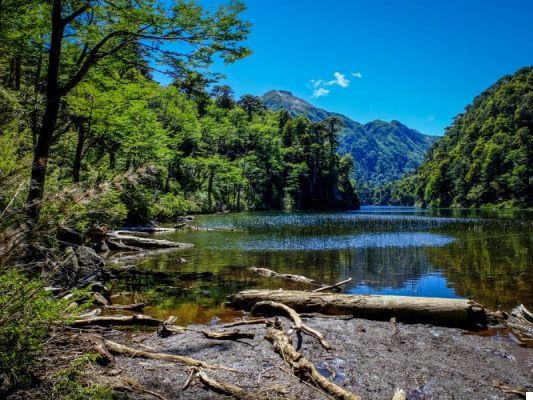
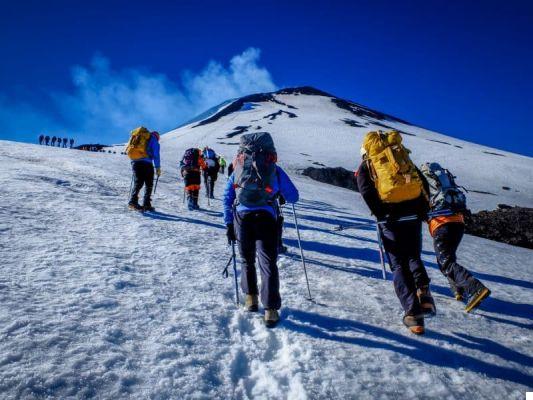
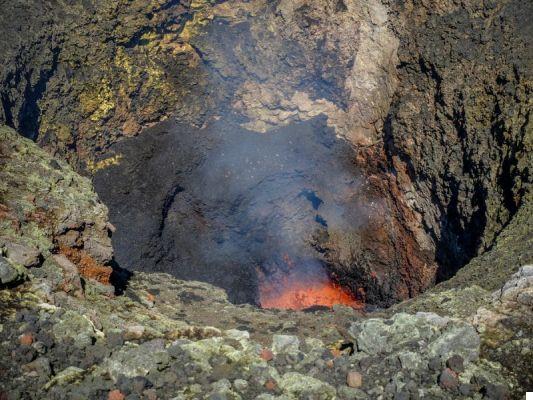
What to see in Chilean Patagonia
Puerto Varas
The menacing profile of the snow-capped volcanoes, Osorno (2660 m) and Calbuco (2000 m), stands out above the picturesque town of Puerto Varas and on the big one lake Llanquihue. Puerto Varas is quite similar to Pucon (also from here it is possible to do a lot of sporting activities), but it has managed to preserve its authenticity a little more. The most classic excursion is the ascent to Osorno volcano, but you can also circumnavigate the lake by bike or visit the town of Frutillar. The latter houses the Teatro del Lago Sur, an impressive center for the performing arts of international caliber inaugurated in 2010.
The island of Chiloé: a world apart
THEChiloé island it really is a world apart! The Big Island (Isla Grande di Chiloé) is the 5th largest island in the South American continent and is inhabited by proud and independent seafarers who built their history and culture very differently from the rest of Chile. diversity is recognized above all in architecture and cuisine: here are the tejuelas, colorful wooden houses, palafitos, houses built as stilts by the sea, the characteristic colored wooden churches (16 of which have been declared World Heritage of UNESCO), and curanto, a stew of meat, potatoes and seafood that is cooked under the ground.
To reach the island of Chiloé from Puerto Varas there is a direct bus that gets on the ferry in Puerto Montt and reaches the town of Ancud in about 3 hours and a half.
Ancud and the Pinguinera
Ancud it is located in the extreme north of the island and retains some elegant buildings and several palafitos, but its beauty lies rather in the natural environment that surrounds it. Just outside Ancud there is a beautiful coastline with long and wild beaches, but especially the Penguinera de Puñihuil. To see the latter, you can join a half-day trip (all hostels organize it for 150000 pesos); you arrive in front of the islands of Puñihuil by bus and from there you take the boat. This is a unique place because two different species of penguins live together here: the penguins of Magellan and those of Humbolt (which are at risk of extinction). They arrive here with two different currents (one from the south and one from the north) to nest around September and stay until March when the chicks are able to swim and hunt. If you are not planning to go to Isla Mirtillo in Tierra del Fuego this is a trip not to be missed.
The palafitos of Castro
Castro it can be reached in 1h and a half by bus from Ancud and is the most important town as well as the most characteristic; it is perfect for exploring on foot. Do not miss the Iglesia San Francisco de Castro, all in wood, with its yellow facade adorned with purple and mauve decorations (UNESCO heritage) and the various view points on the colorful palafitos. If you decide to stop here to sleep there is the beautiful Palafito Hostel (on a stilt house!) And, next door, the Mar y Canela restaurant.
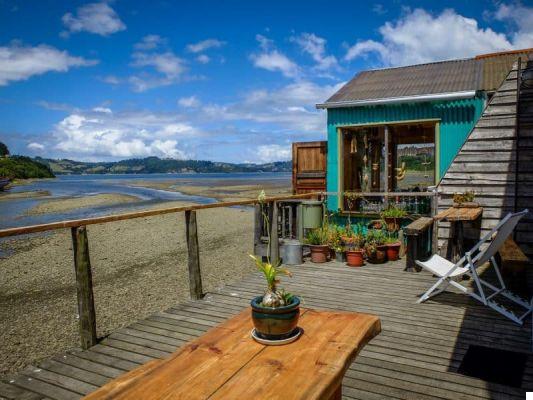
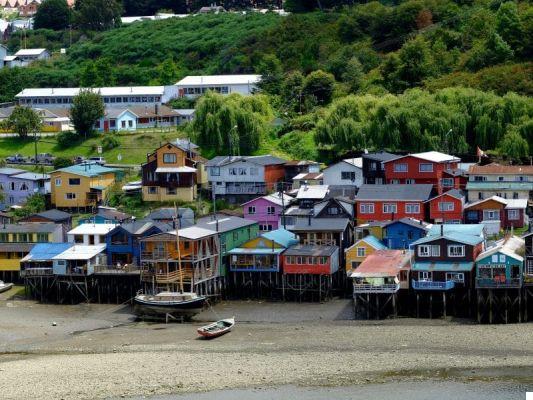
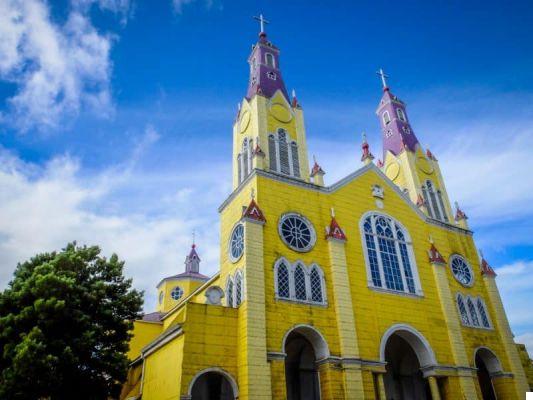
La Carretera Austral: by car or by ferry?
La Chilean Patagonia (from Puerto Montt down) has remained for centuries the most rugged and isolated region of Chile and, to this day, few travelers venture there. At this point Chile becomes particularly narrow and to move there is only the dirt road Austral road which runs from Puerto Montt to Villa O'Higgins for about 1200 km. In some parts there are even no roads because the mountains go directly to the sea. If you have time on your hands it is definitely an experience to do (calculate that public transport here is very limited and almost all travelers hitchhike). Alternatively, as I did, there are the ferries departing from Quellon (on the island of Chiloé) or from Puerto Montt e they arrive in Puerto Chacabuco or directly in Puerto Natales (the latter are very expensive!). In any case, the ferries are few (they leave 2 or 3 times a week in high season) and they fill up immediately so they must be booked well in advance. The seats cannot be booked / bought online with our credit cards but you can write (in Spanish) to the company asking to reserve the seat and then go to collect and pay for the ticket in an office of the same company in Castro or Puerto Montt. I took the Naviera Austral ferry from Quellon to Puerto Chacabuco (seat in semi-cama, semi reclining, for 17000 pesos) which left in the evening at 23pm and arrived after 35 hours (you arrive at dawn 2 days later). In the end it was a bit like taking a cruise, the ferry (which has no berths but only seats) goes through several islands and lots of fjords and the views are breathtaking. If you decide to do so, I recommend that you buy a mat to sleep on the floor and bring food and water; there is a bar / restaurant on board but it sells little or nothing.
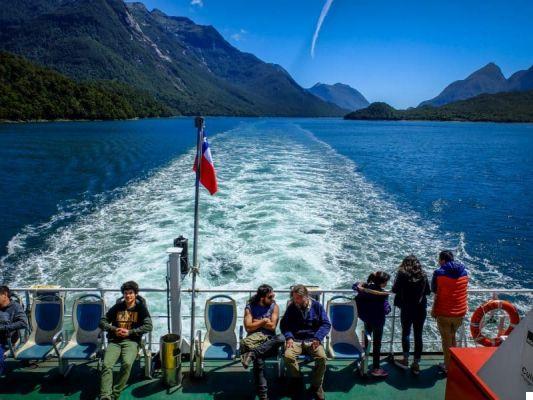
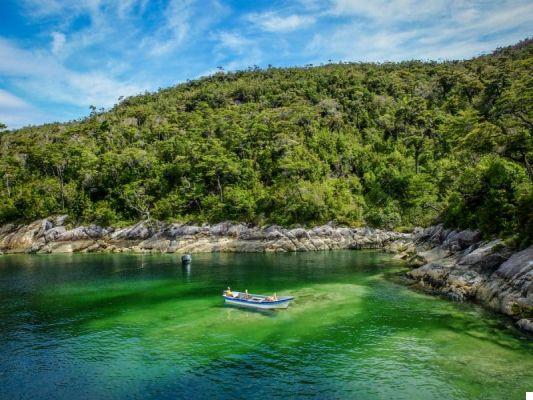
General Carrera lake: the border between Chile and Argentina
From Puerto Chacabuco I had to try to get to Argentina: all the roads end at Villa O'Higgins and you have to cross the border to be able to continue going south. From the arrival of the ferry there is therefore a bus (the famous collectivos) that arrives at Coyaique (4000 pesos in 1h 30 ') and from there another collectivo up to Puerto Ibanez, coinciding with the ferry that goes up to Chile Chico (2200 pesos) where the border with Argentina. It lAug General Carrera it is a huge lake and is divided between Chile and Argentina; the Chilean part is called General Carrera and the Argentine part is called Buenos Aires. The crossing from Puerto Ibanez to Chile Chico lasts 2 hours and a half and is wonderful (but also very windy)! Once you arrive in Chile Chico you can cross the border and enter Argentina in the town of The Ancients (eye that the border closes at 22, I managed to pass by a hair!). From here I then took a night bus that took me to El Chalten, but for this part of the trip I refer you to the article on Perito Moreno and the one on Ushuaia and Tierra del Fuego.
It was just to tell you that almost 4 days have passed since I took the ferry from Chiloé Island to finally being able to sleep in a bed again! This transfer, done in this way, is a game of slaughter and I do not recommend it (unless you are crazy like me).
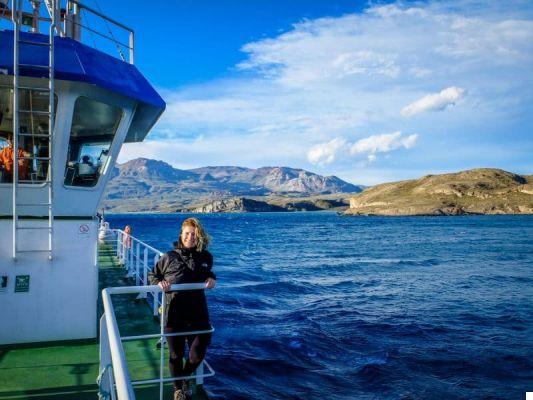
Puerto Natales
At this point we have arrived in the extreme south of Chile, in Southern Chilean Patagonia, and here is Chile's most famous National Park, the Torres del Paine National Park. The postcard photo taken by Las Torres viewpoint it is the emblem of Chile and is the image that this magnificent country represents for everyone. Anyone who comes to Chile necessarily wants to come here. Having traveled around the country quite a bit, I must say that yes, it is certainly an incredible park, but I am not convinced that it is the most beautiful (especially if in the same trip you may also go to El Chalten, on the Fitz Roy or on Cerro Torre).
Anyway, to organize the visit to Torres del Paine the best thing is to arrive in Puerto Natales and base it here. Puerto Natales is a seaside town completely dedicated to tourists, there are many hostels (some spectacular), restaurants (do not miss theAfrigonia, very nice and good!), bars, shops that rent / sell camping equipment and above all agencies that organize excursions. Every day at 15pm, for example, atBase Camp hostel, there is an informative meeting where they explain many useful things to organize the visit to the Torres del Paine Park: for me it was enlightening.
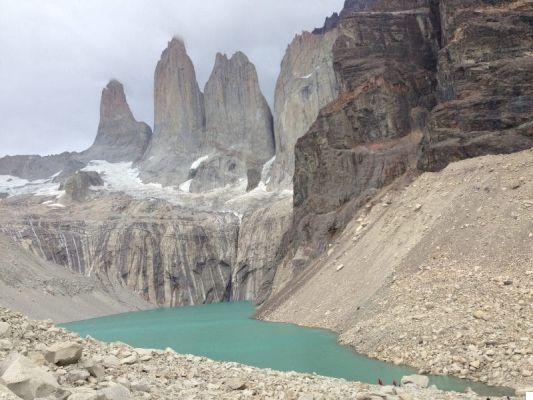
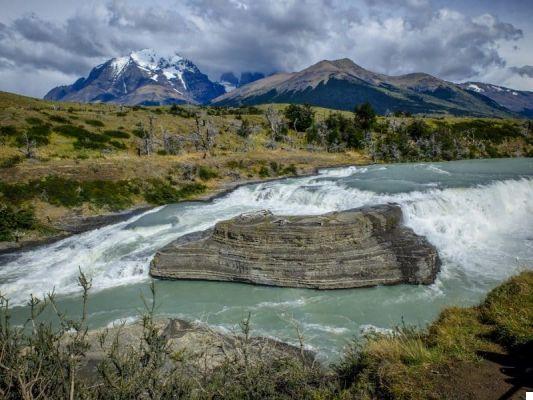
The “W” and the trekking in the Torres del Paine Park
The Torres del Paine Park is located about 2 hours away from Puerto Natales, is an immense park (1810 sq km!) and is extremely organized and equipped. 99% of people come here to be famous "W", a 5 day trek, or the Circuit del Paine 8-11 days, but you have to organize it (= book places to sleep) months in advance. In fact, since 2016 entry to the park is allowed if you have these reservations in hand (except for day trips). If you want to organize multi-day treks, whether it is the W or others, you must first contact one of the 3 companies that manage the campsites inside the park: Conaf, Vertice and Fantastico Sur.
In reality, if you don't have the days counted and you have a bit of flexibility you can get directly to Puerto Natales and, in principle, you can still find a place in some structure (campsites or shelters) to make a multi-day trek inside. of the park. If, on the other hand, you are tied to specific days and you absolutely want to do the classic W you will have to arm yourself with patience and organize everything strictly at least 2-3 months in advance (especially if you go between November and February). Alternatively you can book it online via the Denomades site (a super reliable and, above all, certified sustainable tourism agency) even under date. As for the W, these are the tours that you can book through their website and pay with PayPal or credit cards (VISA, Mastercard, etc.). The site is super secure and the prices are the same as the on-site agencies:
- W classic - 5 days - in a tent and without a guide
- W classic - 5 days - in a tent with a guide
- Classic W - 5 days - in a refuge and without a guide
- Classic W - 5 days - in a mountain hut with guide
If you don't have 5 days available but you still want to see at least part of the park, you can do one 1 day trip to Torres del Paine by minivan always departing from Puerto Natales. I did so and I was still very happy because it allowed me to see different sectors of the park. Another possibility is to participate in one day trip (also from Puerto Natales) to make the trek that reaches Mirador Las Torres.
The Torres del Paine Park is truly immense and varied, in addition to the famous spiers mentioned above there are mirrors with turquoise water, large forests, rushing streams, several waterfalls and an immense glacier with blue reflections (the Glacier Gray). Being so big, as the locals say, it can happen to experience all 4 seasons in a single day. In general, at least from what I understand when talking to many people, there is always a lot of wind and the weather changes very quickly. In the park it often rains and you have to leave equipped. NB. Everything is very expensive inside the park! Buy and rent everything you need in Puerto Natales.




